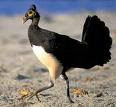
The tiger uses his size and strength to beat his potential prey and pull it out of balance. Despite its large size, the Tigers can reach speeds of up to 72 km / h; also uses your muscles to support and bring down their prey, especially if large, as a gaur. Once the animal is in the ground, the tiger bites the back of the neck, often breaking the spinal cord, or piercing the trachea, giving his prey a death almost immediately.
The adult tigers are able to jump up to 5 meters, or 9 or 10 m in length, making it one of the highest mammals that can fly (only behind the Puma on the jumping ability).
Tiger claws (which typically measure about 7.5 cm long), combined with the strength that can be used to hit, make him capable of killing an adult ruminant with a single blow.
Extinct species
During the twentieth century, three subspecies have become extinct due to hunting and habitat degradation:
* The Bali tiger (P. t. Balice) existed only in the remote island of Bali. Balinese tigers were hunted and hunted to extinction, the September 27, 1937, with an adult female in Sumbar Kima hunted in the west of Bali. The Bali tiger was the smallest tiger subspecies, with maximum weight of 100 kg in males and 80 females.
* The Javan tiger (P. t. sondaica) lived alone on the island of Java. Probably, the subspecies is extinct since the late 70s, as a result of hunting and habitat destruction, but his disappearance and was likely in the early '50s (when it was thought that there were fewer than 25 copies in the wild). The last Javan tiger was seen in 1979.
* The Caspian tiger (P. t. virgata) was the only tiger that lived in western Asia, spanning countries such as Afghanistan, Iran, Iraq, Pakistan, Russia and Turkey. Suffered a campaign of extermination in Tsarist Russia. The Russian was killed last issue in today's Azerbaijan in 1923, and the subspecies disappeared forever when the last tiger was hunted Iran in 1959. It was a large tiger, almost as large as the Bengal tiger, and the males could reach 240 kg. It was one of the two subspecies of tiger (with India) that in addition to the Atlas lion and other animals were used by the Romans to fight with gladiators.




